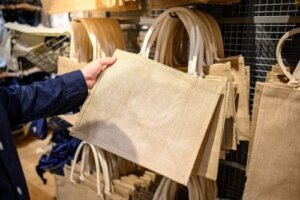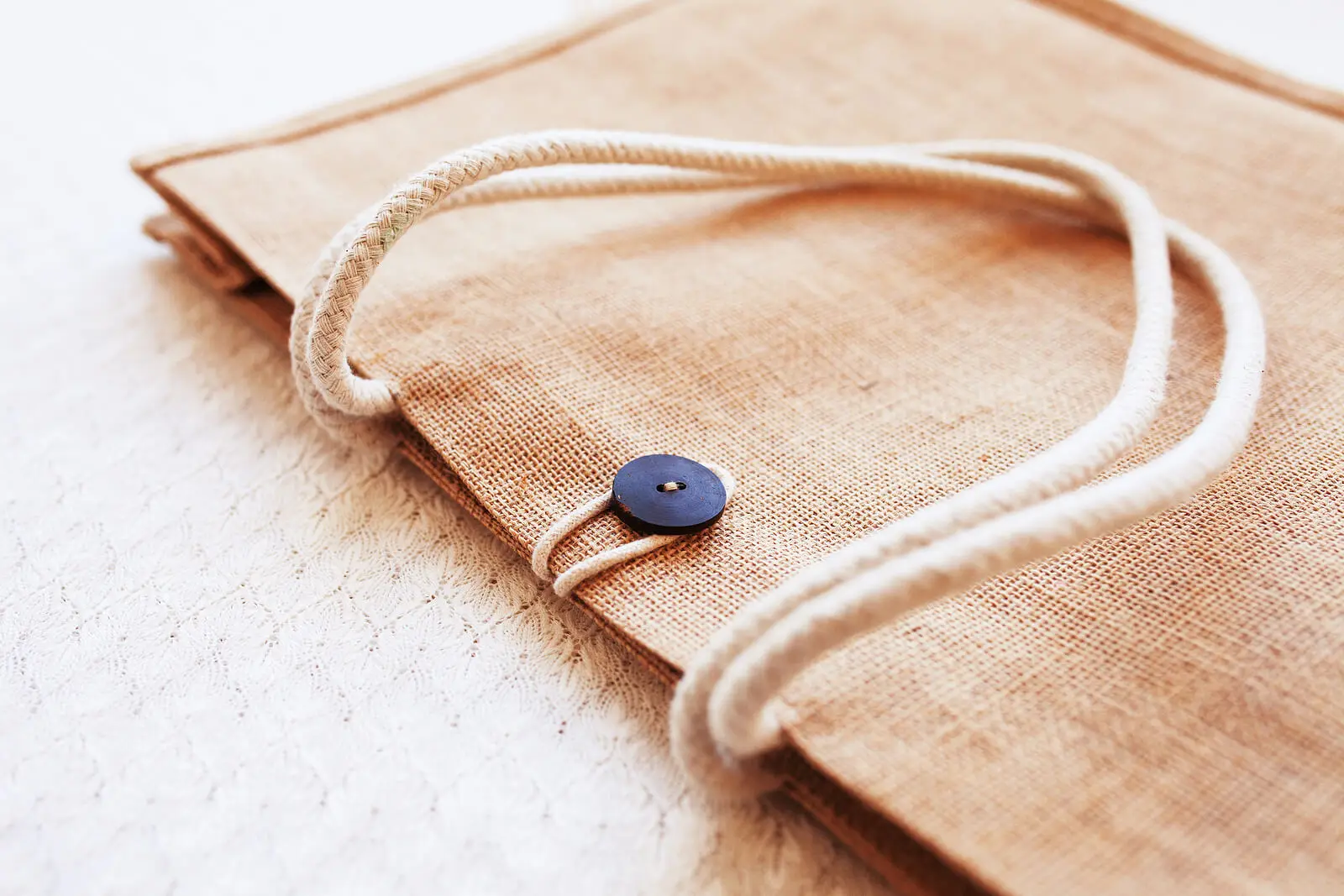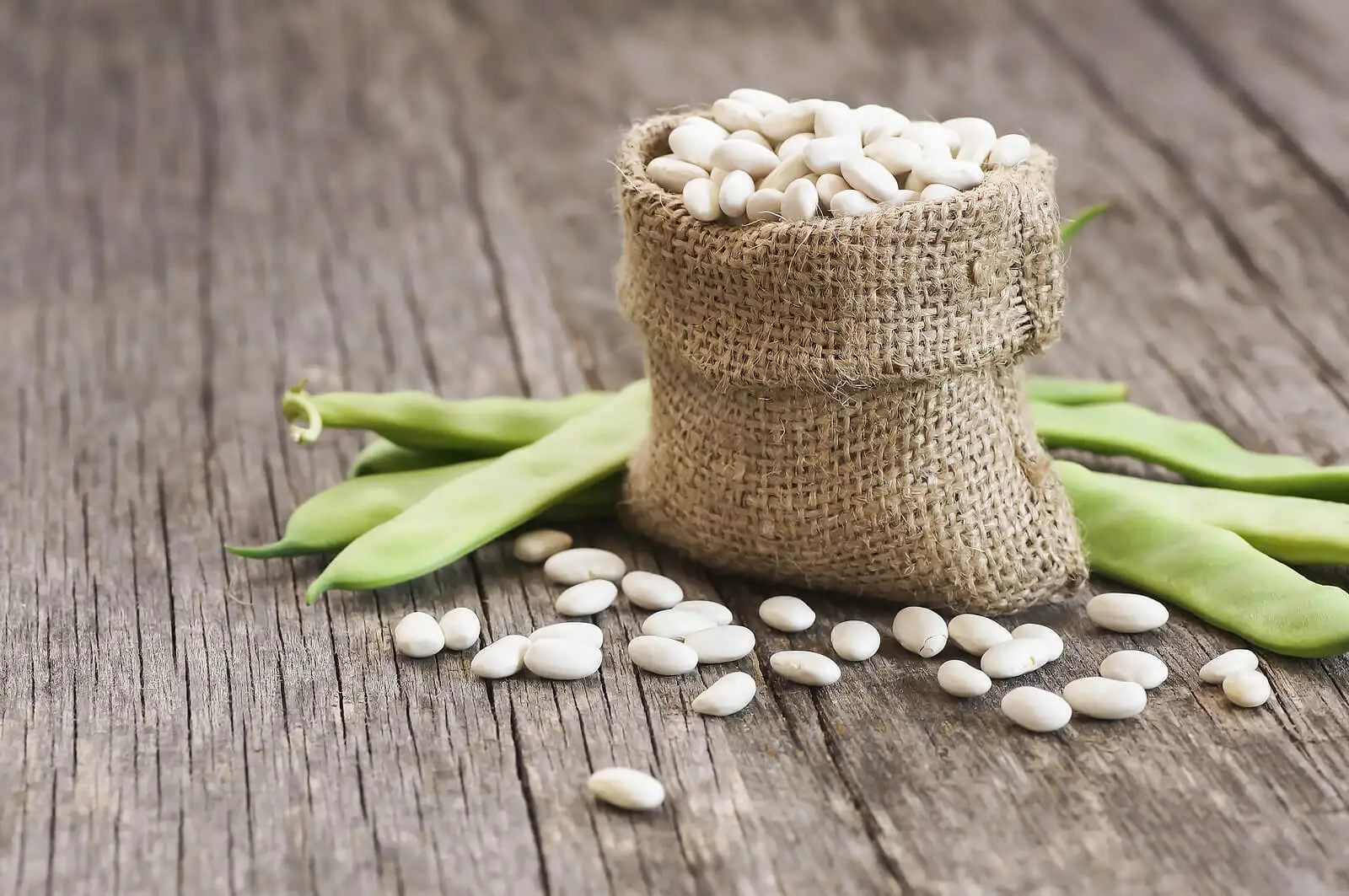What Is Jute and Why Is it Recommended to Replace Plastic Bags?

In the quest to look after our environment, experts are constantly looking for materials that can replace plastic. One of the solutions that has gained popularity is jute. Does this option work?
It’s an ecological and sustainable fabric material that has gained extra points over plastic bags due to its resistance and durability. Here are its advantages and disadvantages.
What is jute?
Jute, also known as “golden fiber”, is a plant whose scientific name is Corchorus Capsularis. It’s mainly produced in India, where it also comes from. Even so, it can also grow in tropical regions.
There are several species, but the most widely used is the white one. Although the Corchorus Olitorius, or Tossa Jute, species is of better quality, it’s usually more difficult to cultivate.
You probably have a bag, carpet, basket, or fabric made from this material without knowing it. Because of its advantages in the textile industry – and the fact that it’s also cheap – it has been used for the manufacture of various items for at least 5000 years.
Main uses
- Due to its strength, jute is often used in the manufacture of sacks for the storage and transportation of agricultural products. It’s commonly seen as packaging for cereals, sugar or potatoes.
- It isn’t only used to replace shopping bags. It’s also being used as an option for silver bags, gift packaging, and covers, among others.
- In the automotive industry it’s an element used in the manufacture of composite materials.

Read more: 5 Ways to Recycle Plastic Bottles
Advantages of jute: why is it better than plastic bags?
Due to its characteristics, jute is considered a better option when compared to plastic. In fact, some advantages have been identified over materials made from cotton. Here’s a list of its benefits.
- It’s 100% ecological. It doesn’t require the use of pesticides or chemical fertilizers for its harvesting.
- It’s resistant and breathable, ideal for use as a market bag because it prevents products from losing their freshness.
- The Food and Agriculture Organization of the United Nations (FAO) explains that one of the benefits of jute is that when planted in one hectare, it consumes 15 tons of carbon dioxide and transforms it into 11 tons of oxygen. More than some trees.
- It can be mixed with other natural or synthetic fibers, dyed, and printed, if desired.
- It only needs 6 months to reach maturity. This means that it doesn’t require much land to cultivate it compared to other plants.
- It’s reusable.
- It has low thermal conductivity. It also has insulating and antistatic properties.
- It’s economical.
Disadvantages of jute
The truth is that its disadvantages are nothing when compared to the benefits it offers. However, it’s necessary to be aware of them. One of the cons of jute is that it’s very absorbent. Because of this, it’s difficult to remove the stains that form on its surface.
Also, if it’s submerged in water for a long time, it can disintegrate. In this regard, it’s best to avoid humidity. If it gets wet, it should be dried in the open air.
Jute or cotton: which is better?
If sustainability, maintenance, and degradation are taken into account, jute is better than cotton from an environmental point of view. Although both fabrics are natural, jute requires less water to grow and no chemicals.
Jute is also a strong, durable, economical, and versatile fiber, making it a good choice to replace many items that are usually made of plastic. Without a doubt, when it comes to replacing plastic bags, it’s the best.

Read also: How to Make Curtains With Recycled Materials
One fiber, different uses
Given its strength and versatility, jute is used in the manufacture of various household items, such as carpets, ropes, burlap, clothing, baskets, market bags, among others.
Due to its benefits for the environment, it has gained popularity as a substitute for plastic packaging. Many companies have even opted for this material when wrapping their products. Do you usually use it at home?
All cited sources were thoroughly reviewed by our team to ensure their quality, reliability, currency, and validity. The bibliography of this article was considered reliable and of academic or scientific accuracy.
- Zhang L, Ma X, Zhang X, et al. Reference genomes of the two cultivated jute species. Plant Biotechnol J. 2021;19(11):2235-2248. doi:10.1111/pbi.13652
- The Food and Agriculture Organization of the United Nations [Updated June 2022]. Jute. Available from: https://www.fao.org/economic/futurefibres/fibres/jute/en/
This text is provided for informational purposes only and does not replace consultation with a professional. If in doubt, consult your specialist.








